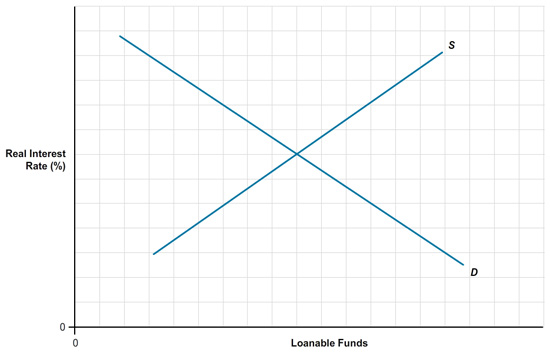Chapter 1. Chapter 11a (22a)
Step 1
Question
Consider a country’s market for loanable funds depicted below. The supply of loanable funds (S) and demand for loanable funds (D) are given in the graph.

If workers fear that unemployment will increase, then the /KJ+SnOt7oClNejuvGrtyC0tC6434NlS loanable funds most likely TY3Ew/to3tAOgRJ5JhIYLgp/deTGxbxBMB4oiA==, and the equilibrium interest rate Z1sFeNjn21dFR6hgV/I0OLPyd1RYjxmk.
Step 2
Question

If people’s wealth increases, then the /KJ+SnOt7oClNejuvGrtyC0tC6434NlS loanable funds most likely 6BDYiCF1Oe18CidFdPnXjcjI1ROxrP0+mt5ytg==, and the equilibrium interest rate 2+YpLAlBfLjjeAM+EdW71RKJy3IMk7CF.
Step 3
Question

If the country’s level of productivity increases, then the 3fCsHowkn0UqlKoF+DtsYe7VXRHXF0NV loanable funds most likely TY3Ew/to3tAOgRJ5JhIYLgp/deTGxbxBMB4oiA==, and the equilibrium interest rate 2+YpLAlBfLjjeAM+EdW71RKJy3IMk7CF.
Step 4
Question

If businesses become more confident in the future, then the 3fCsHowkn0UqlKoF+DtsYe7VXRHXF0NV loanable funds most likely TY3Ew/to3tAOgRJ5JhIYLgp/deTGxbxBMB4oiA==, and the equilibrium interest rate 2+YpLAlBfLjjeAM+EdW71RKJy3IMk7CF.